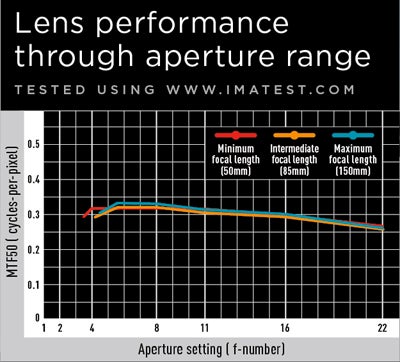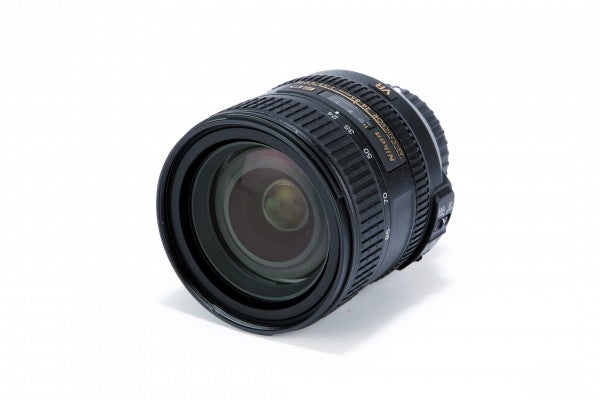This full-frame VR II lens has a stunning optical performance. How highly did it score on test? Find out below
Nikon 24-85mm f/3.5-4.5G ED-IF VR Review
Given the strong performance of Nikon’s 18-105mm f/3.5-5.6 lens, which scored 91% when reviewed earlier this year and costs only £200, it is tempting to ask whether there’s really a market for a similar-aperture 24-85mm lens that has little more than half the zoom range yet costs more than twice as much. The answer is a definite “yes”, not only because the 24-85mm zoom offers full-frame coverage but also because its optical performance is even better than that of the 18-105mm lens.
The 24-85mm Nikkor is pleasingly compact with an exterior that is roughly divided into thirds: the front section is filled with the zoom ring; the middle section is home to a focused-distance window; and the rear section provides a narrow manual-focusing ring and two sliders that set the focus mode and activate the VR system.
There might be a case for saying the middle section is not well used and that it would be better to sacrifice the focused-distance window to create wider zoom and focusing rings – but that would require a change of ethos for Nikon’s full-frame lenses. (The 18-105mm DX lens adopts this alternative suggestion but it is aimed at a different market.)
Focusing is internal and manual adjustments can be made at any time. As is the case for the 18-105mm zoom, it is necessary to shift grip slightly in order to reach the manual-focusing ring but the lens still feels well balanced. Automatic focusing is more than sufficiently quick but it is not outstandingly fast.
Image quality is a key strength of the full-frame 24-85mm zoom. There was no sign of visible chromatic aberration in any real-world images, and although it was possible to discern some separation of the curves when photographing technical test targets there was no colour fringing to be seen.
In addition, the MTF figures were consistently high across the aperture range, from wide-open to f/22, at all three focal lengths tested. The figures dipped at f/27, which is the minimum aperture setting from about 28mm onward, but performances beyond f/22 are not penalised in WDC’s tests because quality-conscious photographers would naturally avoid such apertures; here, image quality is bound to drop significantly owing to diffraction.

The MTF curves hover around 0.3 cycles-per-pixel from wide-open down to f/16 and even at f/22 they are still comfortably above the critical 0.25 cycles-per-pixel threshold.
At the other end of the scale, the zoom’s f/3.5-4.5 maximum aperture restricts the use of out-of-focus backgrounds to some degree, but this is a tolerable limitation in such a well priced and otherwise impressive lens.
Overall this is a stunning lens. There really is nothing to fault on any serious level at all. Nikon’s use of ED glass and three aspherical profiles has clearly paid off here in terms of colour purity and sharpness and any Nikon user who can live without an f/2.8 maximum aperture ought to consider this lens very seriously as an alternative to much costlier 24-70mm zooms.





